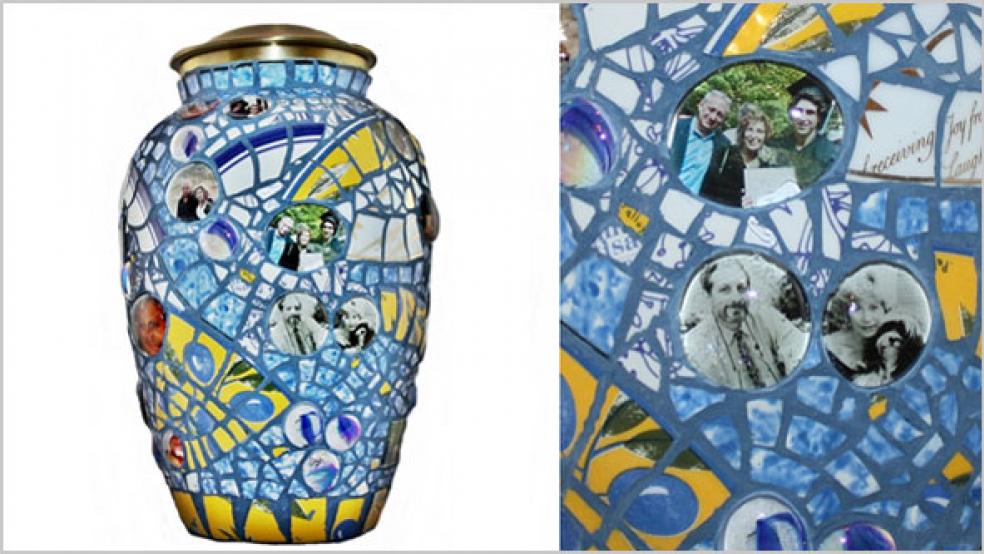Jenny Barber, a healthy 56-year-old living in Columbia, South Carolina, has already planned her funeral. After working with families of Alzheimer's patients for many years and seeing the suffering involved, she plans to donate her brain to research and have the rest of her body cremated. Then she wants a memorial service that's low cost but very spiritual, meeting her family's emotional needs on a budget. "I can still live on by being part of the future to help others and depart with love, dignity and financial responsibility," she says.
Barber is one of many boomers who are paving a more frugal path at the end of their life. "It's not the way your grandparents did things," said James Olsen, owner of the Lippert-Olson Funeral Home in Sheboygan, Wisconsin. Disposing of a body through cremation, and avoiding the costs of a casket and burial, can be cheaper, he said. And, he says, boomers planning their parents' funerals are more interested in value than tradition. They're seeking a commemoration that reflects their personality. Funeral directors are gearing up for more individualized services that represent the deceased's legacy as the oldest boomers reach 65. Allen recalls one aging car buff planning a ceremony with a procession of vintage cars from a local car club, and a long-time scout leader requesting a procession of Boy Scouts. One artist, Sybil Sage , even crafts mosaic cremation urns with photos and plate shards that make the urns more personal.
These changes, especially the increase in cremation rates, are causing funeral homes to reinvent the way they do business. While cremation was the method of disposition for 23.75 percent of deaths in 1998, it jumped to 36.86 percent in 2009 and is projected to climb to 46.04 percent by 2015, according to the Cremation Association of North America. A key reason is cost.
The price of the average funeral is $7,755 according to the National Funeral Directors Association, while a typical cremation is roughly one-third of that amount, says Mark Matthews, the Cremation Association's president. Also, with family members often spread out geographically, there's no longer the connection with the community and the pull to be buried in a traditional family plot, says Mark Allen, executive director of the Casket & Funeral Supply Association of America http://www.cfsaa.org/. The sanctioning of cremation by religions that were perceived to have opposed it, such as Catholicism, have helped it to go mainstream. As cremation becomes a popular low-cost alternative, it's causing a decline in the need for caskets, headstones and the funeral home itself. And it's forcing funeral homes, already hit by the economic downturn, to broaden their services to generate new sources of revenue.
Bruce Buchanan, co-owner of Flanner and Buchanan Funeral Centers in Indianapolis, Indiana, rents out his facilities for functions like weddings, anniversaries and bar mitzvahs. "Our business model needs to evolve, so event planning beyond traditional funerals is critical to our long-term survival," he said. He's slated to host 130 weddings this year, and says that it's not as strange a concept as it seems: life events like weddings, anniversaries and funerals are similarly themed, he says. Nitigna Health, age 23, got married at Buchanan's Community Life Center, the facility he uses for weddings, in June. She made sure her 200 guests were facing away from the adjoining cemetery during the outdoor ceremony. The facility was roughly a third cheaper than others she visited, and guests raved about the ambience. "It was the most beautiful, amazing and perfect day. It was a true fairy tale," she said.
Just as funeral homes are suffering, monument builders are also feeling the pinch from rising cremation rates. "This has affected almost everybody in the monument industry," says Bill Minozzi, owner of National Memorials in Lakeland, Florida. "You can't put up a monument if there's no grave." The average price of an upright headstone is $2,000, though elaborate monuments can cost as much as $100,000, he said.
To keep business thriving, he's emphasizing the need for memorials, even if the body is not buried. This could range from a traditional headstone to an engraved bench in a park that honors the memory of the deceased and gives survivors a place to reflect, remember and grieve. The Funeral and Memorial Information Council is rolling out a public relations campaign within the next year that will communicate the importance of memorials to commemorate the deceased. "There is the hope that as more people learn about their options, they'll do more and have more memorials and services," said Bob Fells, executive director and general counsel, International Cemetery, Cremation and Funeral Association. "Just throwing away the ashes is not what people want. It goes against the grain of human nature," he said.
Allen, who has seen casket sales decline significantly, says that lower-cost cremation caskets, where the body can be presented at a funeral service before it's cremated, are becoming popular. "Funeral directors are getting more savvy about the options they can offer to families," he says. And with such a large population of aging boomers, that's sure to boost the funeral industry business.



